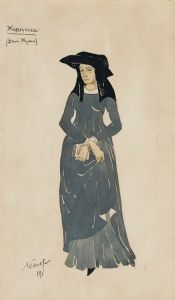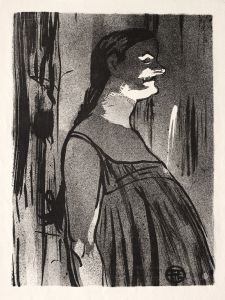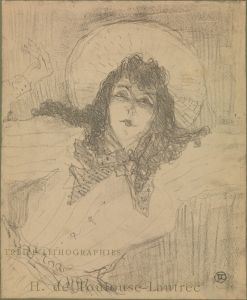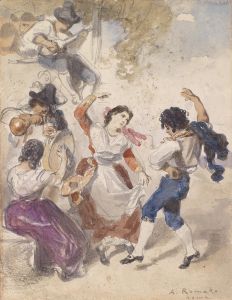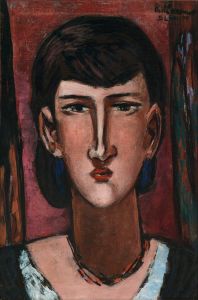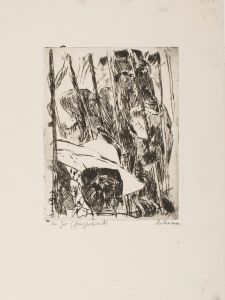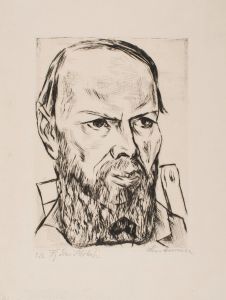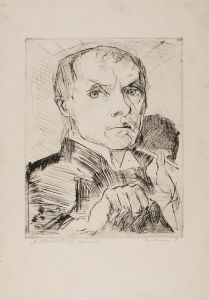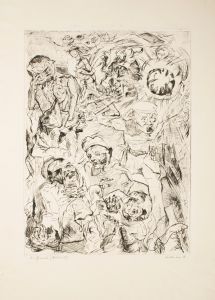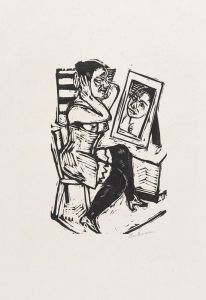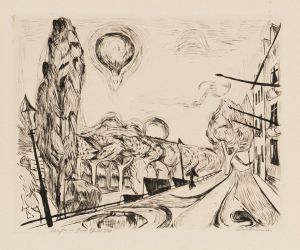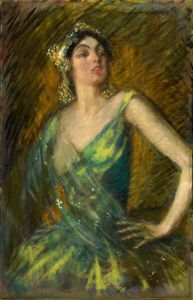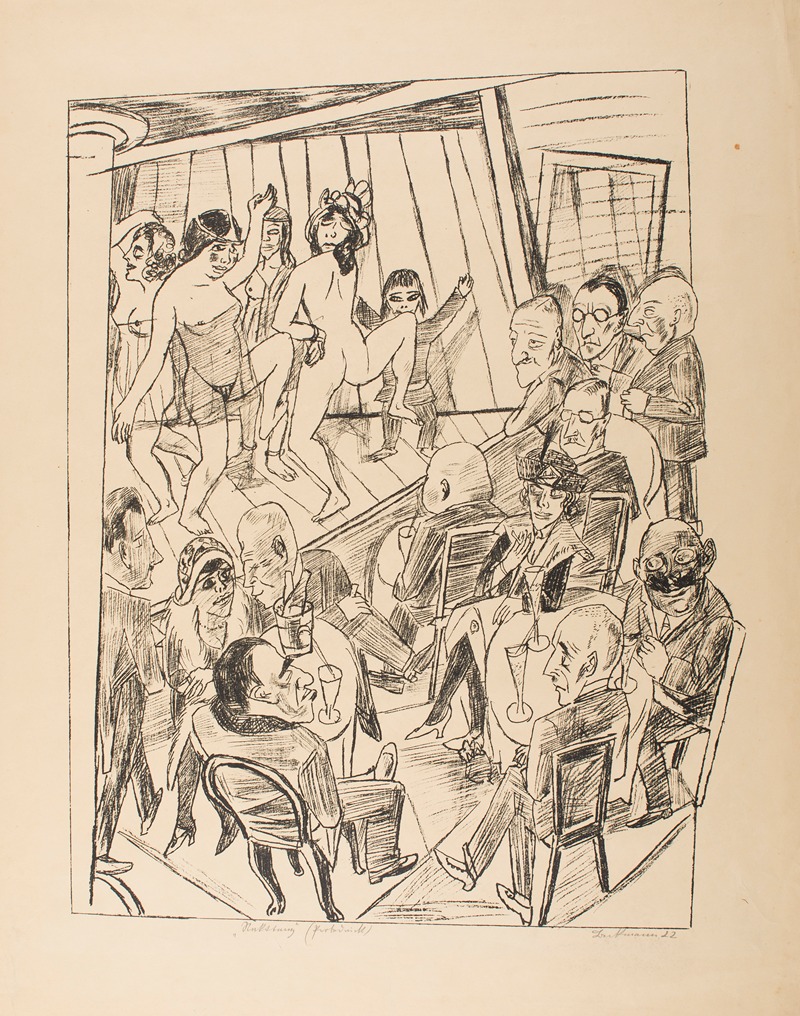
Striptease, plate 4 from the series ‘Trip to Berlin 1922’
A hand-painted replica of Max Beckmann’s masterpiece Striptease, plate 4 from the series ‘Trip to Berlin 1922’, meticulously crafted by professional artists to capture the true essence of the original. Each piece is created with museum-quality canvas and rare mineral pigments, carefully painted by experienced artists with delicate brushstrokes and rich, layered colors to perfectly recreate the texture of the original artwork. Unlike machine-printed reproductions, this hand-painted version brings the painting to life, infused with the artist’s emotions and skill in every stroke. Whether for personal collection or home decoration, it instantly elevates the artistic atmosphere of any space.
Max Beckmann's "Striptease, plate 4 from the series ‘Trip to Berlin 1922’" is a notable work by the German painter and printmaker, Max Beckmann. This piece is part of a larger series that reflects Beckmann's experiences and observations during his time in Berlin in the early 1920s. Beckmann, who is often associated with the New Objectivity movement, was known for his expressive and often critical portrayal of society, and this series is no exception.
The "Trip to Berlin 1922" series captures the vibrant yet tumultuous atmosphere of post-World War I Berlin, a city that was experiencing significant social and political changes. The Weimar Republic era was marked by a mix of cultural flourishing and economic instability, and Berlin was at the heart of this dynamic period. Beckmann's work from this time often explores themes of decadence, existential angst, and the complexities of modern life.
"Striptease" specifically delves into the nightlife and entertainment culture that was prevalent in Berlin during the 1920s. The city was known for its cabarets, nightclubs, and a burgeoning scene that pushed the boundaries of traditional social norms. Beckmann's depiction of a striptease performance is not merely an illustration of an event but a commentary on the nature of spectacle and the human condition. His use of bold lines and stark contrasts in his prints adds to the dramatic and sometimes unsettling effect of his work.
In this particular piece, Beckmann employs his characteristic style, which includes a strong use of black and white contrasts and a focus on the human figure. The figures in "Striptease" are rendered with a sense of immediacy and intensity, capturing the viewer's attention and inviting them to ponder the deeper implications of the scene. The work reflects Beckmann's interest in the interplay between the public and private spheres, as well as the performative aspects of identity.
Beckmann's time in Berlin was a period of significant artistic development for him. He was deeply influenced by the city's avant-garde scene and the various artistic movements that were emerging at the time. His work from this period, including the "Trip to Berlin 1922" series, showcases his ability to blend traditional techniques with modern themes, creating a body of work that is both innovative and reflective of its time.
Overall, "Striptease, plate 4 from the series ‘Trip to Berlin 1922’" is a compelling example of Max Beckmann's exploration of early 20th-century urban life. It provides insight into the cultural and social dynamics of Weimar Berlin while also highlighting Beckmann's unique artistic vision. Through this work, Beckmann invites viewers to engage with the complexities of human experience, making it a significant piece in the study of modern art.





